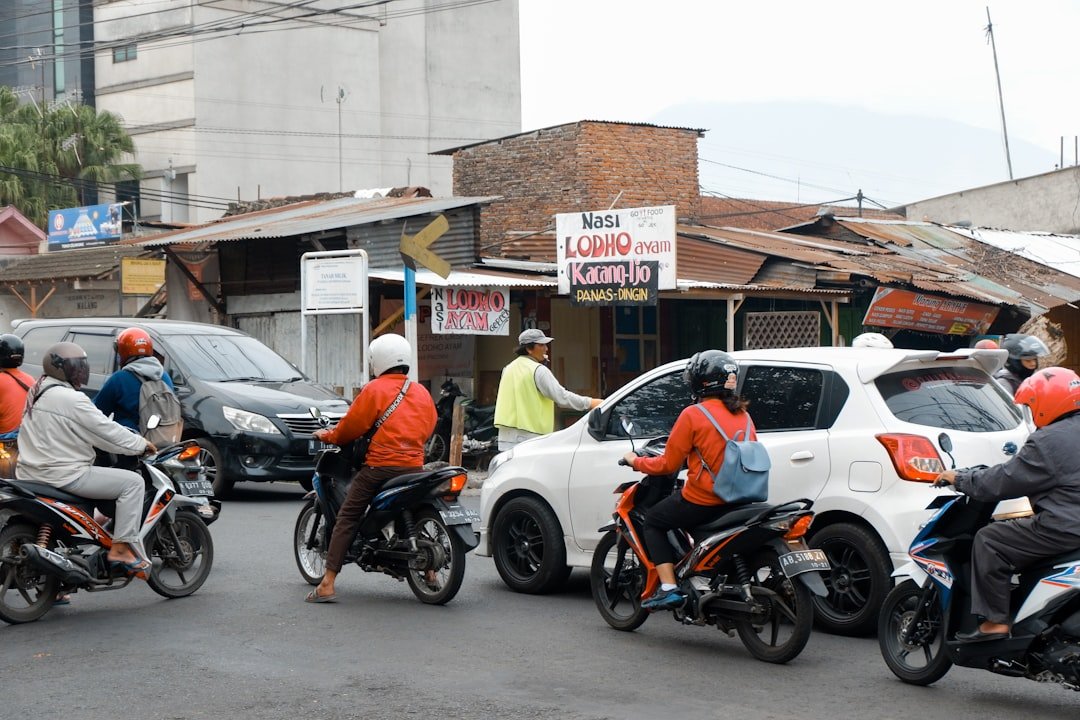Lane splitting, also known as white-lining or stripe-riding, is the practice of riding a motorcycle between lanes of slow-moving or stopped traffic. In the state of Nevada, lane splitting is not explicitly prohibited by law, but it is also not explicitly allowed. This means that while it is not illegal, it is also not specifically permitted. The lack of specific legislation regarding lane splitting in Nevada can lead to confusion for both motorcyclists and other drivers on the road.
In Nevada, the laws regarding lane splitting are somewhat ambiguous, which can make it difficult for motorcyclists to know whether they are breaking the law or not. While some states have clear guidelines on lane splitting, Nevada does not have specific laws addressing this practice. This can lead to uncertainty and potential conflicts between motorcyclists and other drivers. It is important for motorcyclists to be aware of the potential risks and legal consequences of lane splitting in Nevada.
Key Takeaways
- Lane splitting is legal in Nevada, but there are specific laws and guidelines that riders must follow to ensure safety and legality.
- Risks of lane splitting include the potential for accidents, injuries, and angering other drivers on the road.
- Lane splitting can reduce traffic congestion, shorten commute times, and improve fuel efficiency for motorcyclists.
- Safe lane splitting tips include staying within a reasonable speed, being aware of surrounding vehicles, and using turn signals when changing lanes.
- Navigating traffic and lane splitting requires motorcyclists to be vigilant, assertive, and respectful of other drivers on the road.
Risks and Dangers of Lane Splitting
Lane splitting can be a risky maneuver for motorcyclists, as it puts them in close proximity to other vehicles and reduces their margin for error. One of the main dangers of lane splitting is the risk of being involved in a collision with another vehicle. Drivers may not always be aware of a motorcyclist approaching from behind, and sudden lane changes or movements by either party can lead to a dangerous situation. Additionally, the close proximity to other vehicles increases the risk of being struck by a car’s side mirror or door, which can result in serious injury or even death.
Another risk associated with lane splitting is the potential for road hazards. Motorcyclists who engage in lane splitting are at a higher risk of encountering debris, potholes, or uneven road surfaces, which can lead to loss of control and accidents. Furthermore, the reduced space between vehicles can make it more difficult for motorcyclists to maneuver and react to unexpected obstacles. It is important for motorcyclists to consider these risks and exercise caution when deciding whether to engage in lane splitting.
Benefits of Lane Splitting
While there are risks associated with lane splitting, there are also potential benefits for motorcyclists. One of the main advantages of lane splitting is that it can help reduce traffic congestion and improve overall traffic flow. By allowing motorcycles to filter through slow-moving or stopped traffic, lane splitting can help alleviate congestion and reduce the likelihood of traffic jams. This can benefit all road users by reducing travel times and improving overall traffic efficiency.
Additionally, lane splitting can help improve safety for motorcyclists by reducing their exposure to rear-end collisions. When motorcycles are able to move between lanes, they are less likely to be struck from behind by other vehicles. This can help reduce the risk of injury and improve overall safety for motorcyclists on the road. Furthermore, lane splitting can help reduce the risk of overheating for motorcycles, as they are able to move through traffic and avoid prolonged periods of idling in hot weather.
Tips for Safe Lane Splitting
| Tips for Safe Lane Splitting |
|---|
| 1. Always wear protective gear, including a helmet, gloves, and durable clothing. |
| 2. Be aware of your surroundings and constantly scan for potential hazards. |
| 3. Avoid lane splitting in heavy traffic or at high speeds. |
| 4. Use your signals and make eye contact with drivers to ensure they see you. |
| 5. Be cautious of opening car doors and sudden lane changes by other vehicles. |
| 6. Practice good judgment and only lane split when it is safe to do so. |
For motorcyclists who choose to engage in lane splitting, it is important to do so safely and responsibly. One of the most important tips for safe lane splitting is to always be aware of your surroundings and exercise caution. This means constantly scanning for potential hazards, such as changing traffic patterns, opening car doors, or sudden lane changes by other vehicles. It is also important to maintain a safe speed while lane splitting and to be prepared to react quickly to unexpected situations.
Another important tip for safe lane splitting is to communicate your intentions to other road users. This can be done by using hand signals or your motorcycle’s turn signals to indicate your intention to change lanes or pass through traffic. Additionally, it is important to make yourself as visible as possible by using your headlights and wearing brightly colored or reflective gear. By making your presence known to other drivers, you can help reduce the risk of being involved in a collision while lane splitting.
How to Navigate Traffic and Lane Splitting
Navigating traffic and engaging in lane splitting requires a high level of skill and awareness from motorcyclists. When navigating traffic, it is important to anticipate the movements of other vehicles and be prepared to react quickly to changing conditions. This means constantly scanning the road ahead and checking your mirrors for potential hazards or obstacles. It is also important to maintain a safe following distance from other vehicles and to be prepared for sudden stops or changes in traffic flow.
When it comes to lane splitting, it is important to choose your path carefully and be mindful of the space available between vehicles. It is generally safest to split between the far left lanes, as this allows for more space and visibility compared to splitting between narrow lanes or near larger vehicles. Additionally, it is important to be mindful of your speed while lane splitting and to avoid excessive speed differentials between your motorcycle and surrounding traffic. By navigating traffic and engaging in lane splitting with caution and awareness, motorcyclists can help reduce the risks associated with this practice.
Legal Consequences of Lane Splitting in Nevada

In Nevada, the legal consequences of lane splitting are somewhat unclear due to the lack of specific legislation addressing this practice. While lane splitting is not explicitly prohibited by law, motorcyclists should be aware that they could still face legal consequences if their actions are deemed unsafe or reckless by law enforcement. This means that motorcyclists who engage in lane splitting should do so with caution and awareness of potential legal implications.
If a motorcyclist is involved in a collision while lane splitting, they could potentially be held liable for any resulting damages or injuries. Additionally, law enforcement officers have the discretion to issue citations or fines to motorcyclists who engage in unsafe lane splitting practices. It is important for motorcyclists to be aware of the potential legal consequences of lane splitting in Nevada and to exercise caution when deciding whether to engage in this practice.
Public Opinion and Controversy Surrounding Lane Splitting
The practice of lane splitting has been a topic of public debate and controversy among both motorcyclists and other road users. While some argue that lane splitting can help reduce traffic congestion and improve safety for motorcyclists, others believe that it poses unnecessary risks and dangers on the road. Public opinion on lane splitting varies widely depending on individual perspectives and experiences.
One of the main points of contention surrounding lane splitting is the potential impact on overall road safety. Some argue that allowing motorcycles to filter through traffic can improve safety by reducing the risk of rear-end collisions and overheating, while others believe that it creates additional hazards for both motorcyclists and other drivers. Additionally, there are concerns about the potential for conflict and aggression between motorcyclists and other road users as a result of lane splitting.
Overall, public opinion on lane splitting remains divided, with strong arguments on both sides of the debate. It is important for all road users to consider the potential risks and benefits of lane splitting and to engage in respectful and informed discussions about this practice. As public opinion continues to evolve, it is possible that legislation regarding lane splitting may become more clear and specific in the future.
Sure, here’s a paragraph with a related article included as an tag:
If you’re a motorcycle rider in Nevada, you may be wondering about the laws regarding lane splitting. According to an article on Nevada Today, lane splitting is not legal in Nevada. It’s important for riders to be aware of the regulations and to prioritize safety while navigating the roads. Understanding the laws and guidelines can help ensure a smooth and enjoyable riding experience in the state.
FAQs
What is lane splitting?
Lane splitting, also known as white-lining or stripe-riding, is the practice of riding a motorcycle between lanes of slow-moving or stopped traffic.
Is lane splitting legal in Nevada?
As of October 1, 2019, Nevada became the first state to officially legalize lane splitting. However, there are specific guidelines and restrictions that must be followed.
What are the guidelines for lane splitting in Nevada?
In Nevada, motorcyclists are allowed to split lanes when traffic is moving at 30 mph or less and the motorcyclist does not exceed 10 mph faster than the traffic flow. It is also important for motorcyclists to use caution and be aware of their surroundings while lane splitting.
Are there any restrictions on lane splitting in Nevada?
Yes, there are restrictions on lane splitting in Nevada. Motorcyclists are not allowed to split lanes in a reckless or unsafe manner, and they must yield to pedestrians and other road users.
What are the benefits of lane splitting?
Lane splitting can help reduce traffic congestion, decrease the risk of rear-end collisions for motorcyclists, and improve overall traffic flow. It can also help reduce the risk of motorcyclists being rear-ended in stop-and-go traffic situations.
What are the potential risks of lane splitting?
The potential risks of lane splitting include the increased risk of accidents if not done safely, the potential for drivers to be caught off guard by a motorcycle passing between lanes, and the need for motorcyclists to be highly alert and aware of their surroundings.


